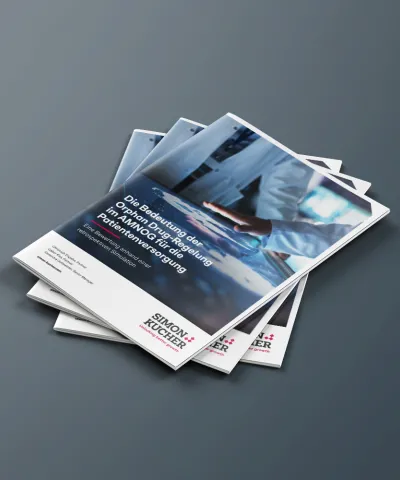More than two years after COVID-19 forced businesses to accelerate their digital strategy, consumers are permanently evolving their payment preferences in favor of digital formats, and businesses are adapting to consumers’ needs. In 2022, more than 53% of e-commerce merchants expanded payment methods to include digital wallets, QR payments, and digital invoicing.
Similar trends can be observed within the healthcare provider landscape, with 74% of patients preferring online payments for medical bills[2]. However, currently about 70% of patients still receive medical bills via mail[3] with real financial implications to bottom line performance and patient experience. To respond to this, healthcare finance leaders are looking for new and innovative payment solution partners to improve their digital engagement strategy to offer flexible and digital payment options.
Simon-Kucher & Partners’ provider market understanding revealed about half of healthcare finance executives feel unsatisfied or neutral towards their current collection strategy. The low overall satisfaction with current solutions combined with the shift in patients’ payment preference highlights key opportunities for payment collection vendors to engage healthcare finance stakeholders with novel strategies to engage patients digitally and improve financial performance.
Why healthcare finance leaders are acting now to shift towards more flexible and digital collection methods:
- Timely and accurate patient estimates increase the capture of patients’ willingness to pay:
The highest willingness to pay occurs right after a patient is serviced with a steep drop-off in collection rates just days later. This means that it is critically important for healthcare finance leaders to create a timely and accurate billing process to increase the propensity to collect. - Patient payment flexibility leads to better financial performance:
Payment flexibility leads to higher payment propensity. Patients are far more likely to end a transaction because they couldn’t pay with their preferred payment method. Patients increasingly want digital methods of payment, and the trend follows e-commerces’ towards mobile as a primary source of (payment) engagement. - Holistic patient engagement leads to stronger patient retention:
With 3 out of 4 millennial patients willing to switch providers for a better financial experience such as understanding costs upfront and making payments via digital methods [4], it is critical for healthcare leaders to evolve their billing practices to put patient preferences at the center of a collection strategy.
Four key considerations for payment solutions to seize the digital patient engagement opportunity:
On product development prioritization: Continuously evolve towards becoming a holistic collection solution by expanding into broader payment options and methods alongside the patient journey. It’s important to have a needs-based view on improvement objectives. Start by understanding your product’s core value proposition of current and roadmap features and monetization potential. This will help to prioritize investment dollars by focusing on roadmap features that address the market’s most critical unmet needs.
On stakeholder buying criteria: Deeply understand your healthcare customers’ digital transformation goals and objectives. “Ease of use for the patient” has been observed as very important across our research with provider organizations. The perception is that patient-centricity directly correlates with financial performance. It is imperative to understand your customers’ solution-specific buying criteria to align sales motions and get the most out of each prospect meeting.
On pricing strategy: Develop a pricing strategy that caters to your target customers. Preference for different price models may differ by firmographic factors (e.g., geography, provider type, organizational structure, payer mix, patient demographics, etc.). Assessing perceived value delivered, understanding perceived fairness of a price metric, and exploring ways to build a sense of partnership with target customers helps to develop an effective price strategy that enables you to win in the marketplace while monetizing on your customer’s growth.
On feature packaging: Create a packaging structure that allows for a frictionless entry point for prospects and a growth path for more sophisticated / growing players. Providers may differ in how they anticipate using your solution and see differing value in certain features. For example, not all of them may need advanced customization of payment options or various modalities in patient communication. Understanding which capabilities are considered ‘core’ and which of them are truly driving adoption builds the foundation for a packaging structure that unlocks desired growth.
At a time when unprecedented inflation and rising labor costs threaten commercial success, it is critical for healthcare technology companies to rethink their pricing and packaging strategy. The ultimate goals of a robust strategy should aim to protect against competitive threats, address the needs of an evolving provider / patient dynamic, and drive scalable and sustainable growth.





